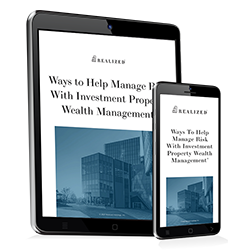
Investing in real estate comes with various risks. The ability to categorize risk allows investors to better understand and analyze those risks. One such risk is called idiosyncratic risk. It is the risk associated with an individual property. In this article, we’ll dive into what idiosyncratic risk is and how it can be calculated.
What Is Idiosyncratic Risk?
Idiosyncratic risk might be considered to be the opposite of market risk by some people. It’s easy to see why. Market risk (i.e., systematic risk) is a risk that all investors assume. It can’t be diversified away. It is a risk that is always present and has a fairly known set of components (i.e., economic, political, business cycle).
Idiosyncratic risk is specific to an individual property. Through diversification, idiosyncratic risk can be managed.
There is also systemic risk, which is basically a shock — a highly negative and unexpected one. Systemic risk can collapse a system or devastate it in other ways. The Great Depression and Great Financial Crisis are two examples. Unfortunately, it’s very difficult to model or forecast systemic risk because of the complexities involved.
Idiosyncratic risk is not the same as asset-level or sector risk. Asset-level risk is risk associated with a group of properties of similar types that are being negatively impacted by some factor.
Idiosyncratic risk can affect a property due to expensive water line repairs, entitlement risk, or environmental risk, to name a few. A new home may go up in front of a property and block its great view. All of those risks affect only one property rather than surrounding properties.
Construction presents idiosyncratic risk as well. While a home or apartment building is being constructed, it can’t collect rent. As a result, there is no cash flow during this time. While that time may be factored into the property’s projections, construction can be delayed, increasing risk and extending the period that there is no cash flow.
A brand new project, one that is being built from the ground up, has more than just delays from construction risk. Entitlement risk can come into play. It isn’t uncommon to start construction on a property while some permits are still being worked out. However, this can lead to unexpected problems with permits not being approved or being excessively delayed.
How Do You Calculate It?
Idiosyncratic risk can be expressed as:
Idiosyncratic Risk = Total Risk – Market Risk
Once larger market risks are removed, a property can be looked at in isolation and idiosyncratic risk better analyzed. Real estate investors look at idiosyncratic risk without giving much thought to the terminology. Developers and investors always face issues specific to their properties, which have nothing to do with the economy or larger real estate market.
Ways To Manage Idiosyncratic Risk
Unlike market risk, diversification helps manage the risk associated with individual properties. It’s not likely that two or more properties will have the exact same issues. By holding two or more properties in different locations and sectors of real estate, investors can achieve diversification.
This may not answer the question — to what degree of diversification has the investor achieved? The first step to managing idiosyncratic risk is to diversify. The next step is to analyze the level or degree of diversification. But that is a topic that is outside the scope of this article.



